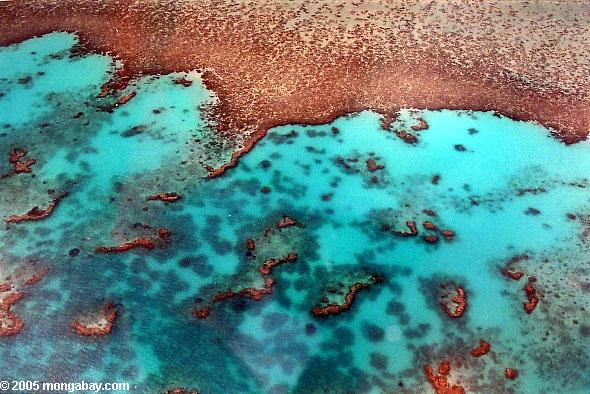
Calcification rates by reef-building coral communities on Australia’s Great Barrier Reef have slowed by nearly half over the past 40 years, a sign that the world’s coral reefs are facing a grave range of threats, reports a new study published in the Journal of Geophysical Research – Biogeosciences.
The international team of researchers, led by Jacob Silverman of Israel’s Institute for Oceanographic and Limnological Research, found that the rate of calcification among reef-building corals around One Tree Island decreased by 44 percent since the early 1970s. They suggest a couple of possibilities for the observed change: (1) an increase in damage caused by organisms like sea cucumbers that feed on reefs, or (2) the effects of rising sea temperatures and ocean acidification brought about by increased carbon dioxide concentrations in the atmosphere.
The findings are consistent with other results from the region.
The world’s coral reefs are being degraded by a number of human-related activities, including overfishing, pollution and agricultural runoff, mining, and climate change. The latter affects corals both through bleaching — the loss of symbiotic nutrient-fixing algae — and ocean acidification which reduces the availability of calcium ions used to build their calcium-carbonate based skeletons.
CITATION: Jacob Silverman et al (2012). Carbon turnover rates in the One Tree Island reef: A 40 year perspective. Journal of Geophysical Research – Biogeosciences, doi:10.1029/2012JG001974 http://dx.doi.org/10.1029/2012JG001974
Related articles